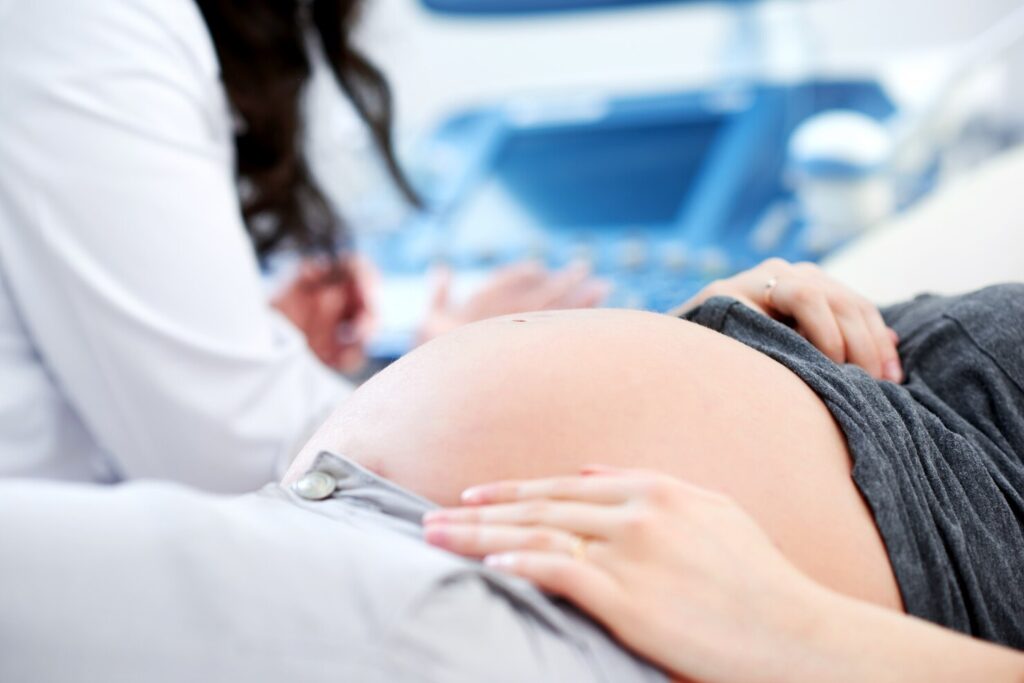When pregnancy begins, expectant mothers try to avoid taking any medications, at least those not related to treating existing chronic diseases or those required for vital indications. Therefore, in the context of an apparently healthy pregnancy, they are very negative about doctors’ prescriptions that mandate taking ‘chemicals’ in any form, believing this will have harmful effects on the future child’s health.
However, pills and tablets come in various forms, and modern obstetricians and gynecologists are also aware of the potential negative impact of certain medications on the baby. They often prescribe Curantil to pregnant women both for the prevention of various complications in the fetus and the mother, as well as for therapeutic purposes. It’s worth understanding what this drug is and why Curantil is prescribed during pregnancy.

What it is and why it is prescribed
In scientific terms, Curantil is a drug from the group of immunomodulator antiplatelets manufactured by the German pharmaceutical company Berlin-Chemie. It is available in the form of dragees and tablets, containing various dosages of the drug’s ingredients. The action of the drug is aimed at boosting immunity and preventing blood clots. Additionally, it helps in:
- normalizing venous outflow;
- reducing resistance of cerebral vessels;
- to correcting placental blood flow;
- to preventing dystrophic placental changes, eliminating fetal tissue hypoxia when preeclampsia is threatened.
The action of the drug is based on the formation of strong bonds with plasma proteins, accumulation in red blood cells – erythrocytes and in the heart after oral administration. It is then excreted from the body with bile after prior breakdown (metabolism) in the liver.

Release Form
The medication is available in tablets or dragees. They are round cylindrical or circular in shape, coated with a shell that has a smooth, uniform surface, the color of which ranges from yellow to yellowish-green. In pharmacies, you can find medications called ‘Curantil 25’ and ‘Curantil 75’ with dosages of 25 mg and 75 mg, respectively. One package of the medication in a lower dosage contains 1 glass bottle with 120 tablets, which is usually calculated for a course of 1-3 months.
The Curantil 75 package contains 2 blister packs, each with 20 tablets. Dragees are also available in pharmacies in packages containing glass bottles with 100 pieces each, and each dragee contains 25 mg of active ingredient. The dosage and regimen during pregnancy are prescribed by a doctor.

Indications for use
The usage instructions recommend prescribing tablets to pregnant women with the following conditions or health disorders:
- varicose veins, which increase the risk of edema and blood clot formation;
- proven increased blood coagulation, which is also fraught with clot formation, and requires blood thinning;
- a history of pregnancy loss, for example, due to miscarriage;
- ischemic heart disease – to prevent the formation of blood clots in the blood vessels that nourish the heart muscle;
- atherosclerosis, which causes cholesterol deposits in the vessels and blood clot formation in this area;
- cardiovascular diseases.
A doctor may prescribe the medication if the pregnant woman is diagnosed with placental insufficiency, impaired blood supply in the uterus, kidneys, and other organs, or in cases of prolonged pregnancy.

Contraindications
Although specialist doctors who are managing the pregnancy are well aware of all the contraindications for taking Curantil, it would be beneficial for expectant mothers to familiarize themselves with these as well, to approach the situation calmly, if necessary. Curantil 25 and 75 are categorically prohibited if the woman is diagnosed with, among other conditions:
- arrhythmia;
- lactase deficiency;
- acute myocardial infarction;
- stomach and duodenal ulcers (during exacerbation);
- kidney and/or liver pathologies;
- certain heart diseases;
- chronic respiratory dysfunction.
Individual intolerance to the components of the medication also excludes taking Curantil in any dosage. The decision on the necessity for a pregnant woman to take the medication in each specific case is made only by the attending physician, taking into account the patient’s overall condition and test results.

Instructions for use and dosage
Opinions on the use of the drug during pregnancy vary among specialists. Domestic doctors usually prescribe it at early stages for preventive purposes and condition correction. Depending on the course of the pregnancy and the woman’s well-being, the gynecologist draws up a treatment plan. It can last, for example, almost three trimesters until delivery or be prescribed as a course.
How to take Curantyl during pregnancy will also be advised by the specialist observing the woman. Typically, a dosage of 25 mg is prescribed in the early stages. The instructions dictate taking the medication several times a day – one hour before meals or two hours after. The tablets should be swallowed whole, without chewing, with a small amount of water.
It is advisable to take it at the same time. When taking Curantyl 25 or 75, you should monitor your well-being. If any negative reactions occur, immediately consult a doctor.
Side Effects
Side effects when using the drug in therapeutic doses are usually transient, mildly expressed, and may manifest during pregnancy from the following:
- nervous system – headache, dizziness, noise in the head, coordination disorders;
- cardiovascular system – lowering blood pressure, heart rhythm disturbances (decreased or increased heart rate), flushing to the face;
- digestive organs – diarrhea, nausea, vomiting;
- blood clotting system – bleeding, a decrease in the number of platelets in the blood, changes in their functional properties.
Side effects may manifest as skin rashes, including hives, joint and muscle pain, a runny nose, and a feeling of ear congestion. Overdosing should not be allowed – it only intensifies the side effects. In this case, immediate gastric lavage and calling an ambulance will be required.
Interaction with other medications
It is necessary to take the remedy considering its interaction with other drugs and substances. The instructions emphasize that concurrent use of acetylsalicylic acid or anticoagulants with the medication significantly enhances their antithrombotic properties and, consequently, may increase the risk of hemorrhagic complications.
During the period of taking the tablets, it is necessary to limit the consumption of black tea, coffee, and pregnancy-safe products that contain similar substances as much as possible. The components of these drinks can significantly reduce or completely neutralize the effect of the medication. Additionally, the concurrent use of xanthine derivatives and Dragees or Curantyl tablets weakens the vasodilatory properties of the medication.

Analogues
In some cases, taking medication during pregnancy is impossible, and a substitution with analogs is required. For example, if the pregnant woman experiences allergic reactions. Common substitutes for the medication are the popular Dipyridamole and Actovegin. They are widely used because of their excellent price-quality ratio. When opting for Actovegin, it should be noted that it is more aggressive; its effects are too strong, and it is prioritized only when the health of the pregnant woman is at risk.
In the case of Dipyridamole, it is distinguished only by its affordable price. Curantil is a foreign medication and is more expensive. Therefore, Dipyridamole can be used as a substitute if there are financial issues. Additionally, acceptable substitutes include medications like Parsydil, Aggrenox, Trombonyl, Persantin. However, all substitutions should only be made on a doctor’s recommendation.



Download the app and get 7 days free use
 eng
eng rus
rus deu
deu spa
spa fra
fra ita
ita por
por srp
srp tur
tur ukr
ukr por
por bos
bos



